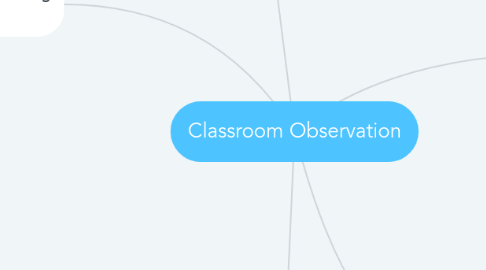
1. Observing the cooperating teacher
1.1. Planning
1.1.1. pre-observation meeting
1.1.1.1. decide focus
1.1.1.1.1. one or two per class
1.1.1.2. procedure to record observations
1.1.1.2.1. narrative summary
1.1.1.2.2. field notes
1.1.1.2.3. checklists
1.1.1.2.4. seating charts
1.1.1.3. teacher trainee may suggest aspects he she would like to learn more about
1.1.1.3.1. e.g. group work
1.1.1.3.2. e.g. classroom management
1.1.1.4. cooperating teacher suggestions for focus
1.1.1.4.1. lesson structure
1.1.1.4.2. classroom management strategies
1.1.1.4.3. types of teaching activities
1.1.1.4.4. teaching strategies
1.1.1.4.5. teacher's use of materials
1.1.1.4.6. teacher's use of language
1.1.1.4.7. students' use of language
1.1.1.4.8. student interaction
1.2. Why? to familiarize yourself with:
1.2.1. course materials
1.2.2. strategies and procedures
1.2.3. interaction T-S and S-S
1.2.4. kind of language they produce and understand
1.2.5. how the teacher creates a positive atmosphere
1.2.6. students response
1.2.7. learners' interests, motivation and learning styles
1.2.8. how the teacher gives instructions and feeeback
1.3. follow-up conversation trainee-cooperating teacher
1.3.1. to clarify and interpret information
2. Etiquette of supervisory observation
2.1. administrative reasons
2.1.1. observer
2.1.1.1. cooperating teacher
2.1.1.2. the school principal and vice-principal
2.1.1.3. practicum supervisor
2.1.2. non-invasive visit
2.1.2.1. choose the best moment (preferably observer should arrive before the class begins
2.1.2.2. choose the best vantage point
2.1.2.2.1. observer should sit facing the students or among them
2.1.2.3. should adopt the best 'Bedside Manner'
2.1.2.3.1. observer should ask the teacher what he or she prefers the role of the observer to be
2.1.2.4. taking notes
2.1.2.4.1. should be kept to a minimum
2.1.2.5. giving the teacher oral and written feedback
2.1.2.5.1. observer should immediately give the trainee some feedback and then a written report
3. Being observed
3.1. if trainee has a comfortable working relationship with cooperating teacher
3.1.1. positive learning experience
3.2. cooperating teacher
3.2.1. makes brief notes
3.2.2. uses some of the procedures for observation
3.3. pre-observation conversation
3.4. post-observation conversation
3.4.1. cooperating teacher
3.4.1.1. helps develop an action plan
3.4.2. trainee
3.4.2.1. can share reactions to the class
3.4.2.2. surprises the trainee encountered
3.4.2.3. what the trainee would have done differently
3.4.2.4. what trainee has learned
3.4.2.5. what trainee thinks students have learned
3.5. purposes
3.5.1. to collect information which trainee might find difficult to observe
3.5.2. to observe how trainee is implementing a new teaching strategy or technique.
3.5.3. to observe how trainee implemented specific stages
3.5.4. to identify successful aspects
3.5.5. to identify aspects to be improved
3.5.6. to identify techniques and practices trainee can apply
3.5.7. to help trainee gain better understanding of their own teaching
4. Presence of observer
4.1. lesson untypical of teacher trainee's usual style
4.2. observer assists you
4.3. observer evaluates you
4.4. observer might be a distraction
4.5. trainee may feel tense
4.6. trainee may overprepare
5. Limitations
5.1. teacher
5.1.1. may be trying to mantain the flow
5.1.2. may have realized the lesson is not produtive
5.2. students response may be varied
5.2.1. stimulating
5.2.2. insufficiently challenging or motivating
5.2.3. may be paying no attention

